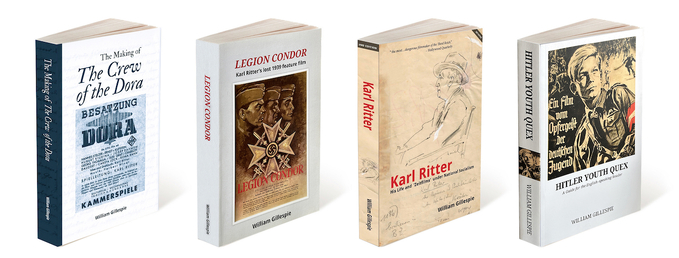- Home
- POSTER GALLERY
- ❗️BOOK & POSTER STORE❗️
- About the Posters
- The William Gillespie Collection
- Our Publishing House
- ❗️GFDN interviews author and collector William Gillespie ❗️
- Our most expensive & inexpensive finds!
- ❗️***NEW!*** Poster of the Month ❗️
- ❗️NEW ❗️Film Posters – Demands on an important means of film advertising. ❗️
- In our Book + Zeitschrift Library
- ❗️ ***NEW!*** Hitler Youth Quex – A Guide for the English–speaking Reader ***NEW!*** ❗️
- ❗️***NEW!*** Table of Contents of our new HJ QUEX book❗️
- ❗️Hitler Youth Quex Guide - early praise! ❗️
- Recent loans from the Collection
- Farewell Horst Claus. (1940–2024 †)
- "Der Deutsche Film" Zeitschrift
- ❗️ ***NEW!***German "Tendency" Films (Tendenzfilme) in the Third Reich ❗️
- KARL RITTER
- Karl Ritter original film posers in this Collection
- "Besatzung Dora" ( † 1943)
- "The Making of The Crew of the Dora"
- Karl Ritter at the 1938 Reichsfilmkammer Congress
- INDEX -"Karl Ritter" book, 2nd edition
- Karl Ritter's Legion Condor (1939, unfinished)
- Excerpt from our "Dora" book
- ∆∆∆∆∆ High praise for our DORA book! ∆∆∆∆∆
- TABLE OF CONTENTS – "Legion Condor"
- § § § § § Early Praise for our LEGION CONDOR book! § § § § §
- ❗️"Das Leben geht weiter" and Karl Ritter ❗️
- Zarah Leander Europe–wide !
- Japan Military Film and Karl Ritter
- Karl Ritter after 1945
- 1935 Film Congress
- Poster Exhibition in Berlin, March 1939
- Potsdam poster exhibition 12 April–25 August 2019
- Leni Riefenstahl's two "Olympia" Films (1938)
- "Ohm Krüger" (1941)
- Emil Jannings
- "Blutendes Deutschland" (1933)
- Hannes Stelzer ( † 1944)
- Klaus Detlef Sierck ( † 1944)
- Film stills
- Reich Film Censorship Offices
- ❗️Dateline: Ufa - April 11, 1945 ❗️
- ❗️***NEW!***The Fate of the German Film Industry in May 1945 ❗️
- Film censorship cards
- Film Archives
- Cinema advertising
- School filmstrips
- ❗️UPDATED❗️ Z F O / Ostland Film G-m-b-H
- Z F O / Herbert Jacobi estate
- ZFO / Ostland Film newspaper articles
- ❗️***NEW!*** Roter Nebel / Red Fog / Red Mist (1942/1943, ZFO) ❗️
- ZFO - Der Rückkehrer - The Returnee (1943/1944)
- The D F G production company
- D I F U
- ❗️ ***NEW!*** "Carl Peters" – Special Collection. ❗️
- "Alcazar" (1940, Genina)
- "Der 5. Juni" (1943, banned)
- ❗️ ***NEW!*** Herbert Selpin and his "Titanic" (1943) ❗️
- ❗️ ***NEW!*** Ein Robinson (1940, Fanck) ❗️
- "Fronttheater" (1942)
- Veit Harlan's Jud Süß and Fritz Hippler's Der Ewige Jude
- Harlan "Jud Süß" trial 1949
- Werner Krauss & JUD SÜß
- Anti-Semitic Film Posters in the Collection
- "Heimkehr" (1941)
- "Hitlerjunge Quex" (1933)
- ❗️***NEW!*** Hitlerjunge Quex in 111 Greater Berlin Cinemas ❗️
- Jürgen Ohlsen
- "S.A.Mann Brand" (1933)
- "In der roten Hölle" (Edgar Neville, 1939)
- "Helden in Spanien" (1938)
- The Spanish Civil War in Film
- Andrews Engelmann (1901 – 1992)
- Deutsche Wochenschau
- Uƒa Feldpost
- Uƒa Kulturfilm – Informationen
- " Die Tochter des Samurai" (1937, Fanck)
- Ufa 25th Anniversary
- Invitations to world premieres
- ❗️***NEW!*** Continental Films, Paris 1940–1944 ❗️
- Film Censorship in Occupied Paris 1942
- "Der Sieg des Glaubens" (1933)
- Wilhelm Althaus Estate
- Weimar Germany posters
- Ufa and the Ordensburgen
- The Gaufilmstelle in our Collection
- "Zwei Welten" (1940)
- "Capriccio" (1938) –Karl Ritter film album
- Unrealised NS Propaganda Films 1934–1945
- German Film Directors accused of "war crimes"
- Australian––themed NS feature films
- "Der Störenfried" / "The Troublemaker"
- What was new in 2014?
- What was new in 2015?
- What was new in 2016?
- What was new in 2017?
- What was new in 2018?
- What was new in 2019?
- What was new in 2020?
- What was new in 2021?
- What was new in 2022?
- What was new in 2023 ?
- What's new in 2024?
- ❗️***NEW!*** Hitler assassination attempt in Karl Ritter film cut❗️
- BESATZUNG DORA private photos
- Just discovered 1942 article on BESATZUNG DORA
- The Karl Ritter Tetralogy
- Google Analytics 2023
- Our first–ever acquisition!
- ❤️"Some of our favourite things....!"❤️
- ERRATUM for our " Hitler Youth Quex Guide"
- Trending
- Vale †
- Our Wants List / 2024 / Wunschliste
- Pop Quiz
- Unsere KARL RITTER Bücher in Deutschland liefbar!
- WHERE to buy our books right now?
- ✉️Contact
 “History is not about the facts. It is about the context and who is telling the story.” —Prof. Milton Fine.
“History is not about the facts. It is about the context and who is telling the story.” —Prof. Milton Fine.
"Who controls the past controls the future: who controls the present controls the past." –– George Orwell in his novel "1984."
"Whoever doubts the exclusive guilt of Germany for the Second World War destroys the foundation of post–war politics." –– Prof. Theodor Eschenberg, Rector, the University of Tübingen.
"If we have our own why in life, we shall get along with almost any how." – Friedrich Nietzsche
POSTER GALLERY --view
over 500 German film
original posters between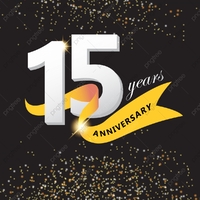
1927–1954 from
Germany and from
many Axis and Neutral countries
across Europe!
Note! Posters in the Poster Gallery are PERMANENT
acquisitions which are NOT FOR SALE!! ONLY the
posters listed in our POSTER STORE are for sale.
(They have a price and order button to use.)
Our publishing house history:
Film Posters of the Third Reich
Our first venture into publishing a title on German film started in 2005 when William Gillespie and Joel Nelson planned to co–author a book on 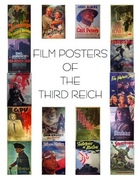 Third Reich film posters; drawing on the best posters from their two respective collections in Australia and in the USA. The book was then written and published by AM Productions in California in 2007. The title was Film Posters of the Third Reich, with 140 pages printed on high-quality Kromekote stock with 50 full-page colour poster images; as well as many B&W images on other pages. Selling about 40% of the books at retail we were then able to sell the remainder of the print–run (1,000 copies) wholesale and cease selling the books ourselves. That combined income of retail and wholesale sales allowed us to break–even on the book. It has been long out-of-print but occasionally a used copy surfaces on ebay.com or Amazon Books, Abe Books, etc. We do have a handful of brand new copies for sale in our Poster Store but the heavy weight and exorbitant Airmail postage fee for the book makes it not possible to send overseas. Sales are restricted to Australian delivery addresses only.
Third Reich film posters; drawing on the best posters from their two respective collections in Australia and in the USA. The book was then written and published by AM Productions in California in 2007. The title was Film Posters of the Third Reich, with 140 pages printed on high-quality Kromekote stock with 50 full-page colour poster images; as well as many B&W images on other pages. Selling about 40% of the books at retail we were then able to sell the remainder of the print–run (1,000 copies) wholesale and cease selling the books ourselves. That combined income of retail and wholesale sales allowed us to break–even on the book. It has been long out-of-print but occasionally a used copy surfaces on ebay.com or Amazon Books, Abe Books, etc. We do have a handful of brand new copies for sale in our Poster Store but the heavy weight and exorbitant Airmail postage fee for the book makes it not possible to send overseas. Sales are restricted to Australian delivery addresses only.
Veit Harlan's "Testament 1945"
In 2011 International Historic Films published this important and fascinating document written by film director VeitHarlan in March/April 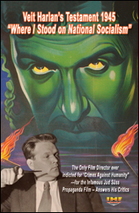 1945 just as his film world came crashing down in the rubble of the Third Reich. Of the sixty original copies mimeographed in the dying days of Nazi Germany, only two or three still exist today. One of those resides here in The William Gillespie Collection. The 23 page document has been translated into English; and both it as well as the original German pages are published. Three rare full–colour full page Jud Süß film posters from Belgium, France and Italy are also reprinted. This was Harlan's very first attempt to justify his notorious film–making for Dr. Goebbels; with particular emphasis on Jud Süß. Our original document was loaned to the Stuttgart Haus der Geschichte in 2008/9 for their outstanding exhibition "Jud Süß – Propaganda Film in the NS State." It therefore was discussed in the documentary film Harlan – In the Shadow of Jud Süß produced by Dr. Felix Moeller when Harlan's relatives visited that exhibition as shown in the film. The brochure is available from IHF here.
1945 just as his film world came crashing down in the rubble of the Third Reich. Of the sixty original copies mimeographed in the dying days of Nazi Germany, only two or three still exist today. One of those resides here in The William Gillespie Collection. The 23 page document has been translated into English; and both it as well as the original German pages are published. Three rare full–colour full page Jud Süß film posters from Belgium, France and Italy are also reprinted. This was Harlan's very first attempt to justify his notorious film–making for Dr. Goebbels; with particular emphasis on Jud Süß. Our original document was loaned to the Stuttgart Haus der Geschichte in 2008/9 for their outstanding exhibition "Jud Süß – Propaganda Film in the NS State." It therefore was discussed in the documentary film Harlan – In the Shadow of Jud Süß produced by Dr. Felix Moeller when Harlan's relatives visited that exhibition as shown in the film. The brochure is available from IHF here.
THE KARL RITTER TETRALOGY -- by William Gillespie
Karl Ritter – His Life and 'Zeitfilms' under National Socialism
Gillespie's interest in the film director Karl Ritter over many years allowed him to accumulate a good number of film posters and ephemera; and by 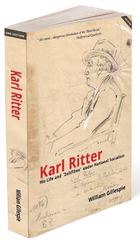 2008 he began researching the director in German archives and mapped out the plan for a biography. In 2010 he was able to locate and make contact with Ritter's surviving grandson in Argentina, and made a trip there in October the following year. That trip established a rapport between the two men, and provided Gillespie with access to Karl Ritter's unpublished private diaries; which he used to good effect in his Karl Ritter – His Life and 'Zeitfilms' under National Socialism, which was published by German Films Dot Net in 2012, with 167 pages including 16 colour plates and 24 B&W rare illustrations/photographs. The edition sold out and a second edition was considered after film scholars contacted the author with suggestions about further research sources. This new research was complemented by newly unearthed Ritter posters and ephemera which had been acquired after the book's first edition was printed. The second edition followed in 2014, with 86 new pages and 4 additional colour–plates; as well as a further 36 new rare B&W illustrations/photographs (new total: 60). That edition was possible due to a second visit to the grandson, and a longer period of time to access and scan pages from the Ritter diaries, as well as private family photographs. The 2nd edition is still available for sale –– see other links in this website, such as the Poster Store.
2008 he began researching the director in German archives and mapped out the plan for a biography. In 2010 he was able to locate and make contact with Ritter's surviving grandson in Argentina, and made a trip there in October the following year. That trip established a rapport between the two men, and provided Gillespie with access to Karl Ritter's unpublished private diaries; which he used to good effect in his Karl Ritter – His Life and 'Zeitfilms' under National Socialism, which was published by German Films Dot Net in 2012, with 167 pages including 16 colour plates and 24 B&W rare illustrations/photographs. The edition sold out and a second edition was considered after film scholars contacted the author with suggestions about further research sources. This new research was complemented by newly unearthed Ritter posters and ephemera which had been acquired after the book's first edition was printed. The second edition followed in 2014, with 86 new pages and 4 additional colour–plates; as well as a further 36 new rare B&W illustrations/photographs (new total: 60). That edition was possible due to a second visit to the grandson, and a longer period of time to access and scan pages from the Ritter diaries, as well as private family photographs. The 2nd edition is still available for sale –– see other links in this website, such as the Poster Store.
Dr. Horst Claus, author of the magnificent first–ever biography of film director Hans Steinhoff Filmen für Hitler: Die Karriere des NS-Starregisseurs Hans Steinhoff wrote the author William Gillespie on June 6th, 2012: " I very much enjoyed reading your book. It's objective, factual and contains interesting visual material!!!“
The Making of The Crew of the Dora
In late 2014, the idea of a book devoted to telling the true story about Ritter's 1943 banned Luftwaffe film, Besatzung Dora, germinated; and  over a seven month period 798 pages of the relevant 1942/43 handwritten Sütterlin diary pages were scanned by the grandson and sent to Gillespie. Coinciding with this effort, some very rare film promotional material, such as the cinema owner's guide to the film (published before the film was banned) and a dozen original lobby cards were acquired from various sources, including private collectors. This provided the foundation of the book, which published some 50,000 words of Karl Ritter about this incredible film project. Besatzung Dora was filmed on both the Western Front and inside the Soviet Union in 1942 on Luftwaffe Fliegerhorst air bases in combat operation against England and the Leningrad Fronts. The African Front was meant to be the third war front used for film scenes in and around Bengasi, but Rommel's retreat at this time made it necessary for those scenes to be shot in the Cinecitta film studios and at the Castel Fusano beach front and at the Ciampino air base outside of Rome, instead. The book was published by German Films Dot Net in 2016, with 301 pages, and 90 B&W illustrations/photographs/maps bringing to life, in Ritter's own words, the planning and the production, and then the banning of the film's release by Dr. Goebbels. The book is still in print and available via this website Poster Store.
over a seven month period 798 pages of the relevant 1942/43 handwritten Sütterlin diary pages were scanned by the grandson and sent to Gillespie. Coinciding with this effort, some very rare film promotional material, such as the cinema owner's guide to the film (published before the film was banned) and a dozen original lobby cards were acquired from various sources, including private collectors. This provided the foundation of the book, which published some 50,000 words of Karl Ritter about this incredible film project. Besatzung Dora was filmed on both the Western Front and inside the Soviet Union in 1942 on Luftwaffe Fliegerhorst air bases in combat operation against England and the Leningrad Fronts. The African Front was meant to be the third war front used for film scenes in and around Bengasi, but Rommel's retreat at this time made it necessary for those scenes to be shot in the Cinecitta film studios and at the Castel Fusano beach front and at the Ciampino air base outside of Rome, instead. The book was published by German Films Dot Net in 2016, with 301 pages, and 90 B&W illustrations/photographs/maps bringing to life, in Ritter's own words, the planning and the production, and then the banning of the film's release by Dr. Goebbels. The book is still in print and available via this website Poster Store.
Legion Condor – Karl Ritter's lost 1939 feature film
After the publication of the Besatzung Dora book, no further book on Karl Ritter or his films was envisioned. But in July 2018 Gillespie discovered in a Berlin used bookstore the long–lost and heretofore-unknown original 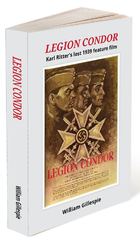 Uƒa film script for Ritter's planned feature film on the Condor Legion. The film was envisioned as a sequel to his famous Pour le Mérite, which broke box office records when it was released Christmas week in December 1938. Ritter had been sent to Spain on the personal order of Adolf Hitler on 28 January 1939, to produce a documentary on the Condor Legion. Ritter and his eldest son Heinz as Cameraman were on Spanish war fronts with the Legion through to early March 1939. During this time Ritter conceived of a feature film to follow Pour le Mérite and he used his extensive private diaries to record events, observations, and episodes of the German pilots in battle before he returned to Berlin. The feature film was then scripted by Ritter and his co-author Felix Lützkendorf and sets and costumes built and shooting on the Ufa studio lot in Babelsberg and greater Berlin Luftwaffe airbases commenced in early August 1939. On 25 August the film was suddenly halted due to the signing of the von Ribbentrop–Molotov Pact; whereby anti-Communist films were no longer to be shown in German cinemas. Once again, Ritter diary pages courtesy of the grandson were generously made available, and the exclusive access to the Ritter diaries and to the only known copy of the film script, made such a book possible. On his penultimate day in Europe in October 2018, Gillespie discovered in the Austrian film archives a dozen press photos that had been taken of those scenes which had been shot prior to the film's abort. The book has been published by German Films Dot Net with 244 pages, and has 4 colour plates and 37 B&W photographs, including those never-before-seen press photos. The entire film script has painstakingly been translated into English and provides the reader with the very first opportunity to appreciate the film script of this amazing and hard–hitting anti-Red war film. The book is available via this website Poster Store.
Uƒa film script for Ritter's planned feature film on the Condor Legion. The film was envisioned as a sequel to his famous Pour le Mérite, which broke box office records when it was released Christmas week in December 1938. Ritter had been sent to Spain on the personal order of Adolf Hitler on 28 January 1939, to produce a documentary on the Condor Legion. Ritter and his eldest son Heinz as Cameraman were on Spanish war fronts with the Legion through to early March 1939. During this time Ritter conceived of a feature film to follow Pour le Mérite and he used his extensive private diaries to record events, observations, and episodes of the German pilots in battle before he returned to Berlin. The feature film was then scripted by Ritter and his co-author Felix Lützkendorf and sets and costumes built and shooting on the Ufa studio lot in Babelsberg and greater Berlin Luftwaffe airbases commenced in early August 1939. On 25 August the film was suddenly halted due to the signing of the von Ribbentrop–Molotov Pact; whereby anti-Communist films were no longer to be shown in German cinemas. Once again, Ritter diary pages courtesy of the grandson were generously made available, and the exclusive access to the Ritter diaries and to the only known copy of the film script, made such a book possible. On his penultimate day in Europe in October 2018, Gillespie discovered in the Austrian film archives a dozen press photos that had been taken of those scenes which had been shot prior to the film's abort. The book has been published by German Films Dot Net with 244 pages, and has 4 colour plates and 37 B&W photographs, including those never-before-seen press photos. The entire film script has painstakingly been translated into English and provides the reader with the very first opportunity to appreciate the film script of this amazing and hard–hitting anti-Red war film. The book is available via this website Poster Store.
NEW! Hitler Youth Quex – A Guide for the English–speaking Reader
We are proud to announce here our latest German Films Dot Net book in our continuing series on German film man Karl Ritter:
 Hitler Youth Quex, the story of a fifteen-year-old working-class boy who defied his father to join the Hitlerjugend in 1932 and died a martyr, was a best-selling novel that became a box office hit when it was released as a motion picture by the famous Ufa film studio in September 1933. It was the first feature film in history devoted to those under the age of twenty, and critics worldwide came to the film’s premieres in Munich and Berlin. Adolf Hitler attended both gala premieres. The film’s song became the anthem of the HJ, and over eleven million youngsters saw the film in the Third Reich. Hitlerjunge Quex became the cult film of the new German youth.
Hitler Youth Quex, the story of a fifteen-year-old working-class boy who defied his father to join the Hitlerjugend in 1932 and died a martyr, was a best-selling novel that became a box office hit when it was released as a motion picture by the famous Ufa film studio in September 1933. It was the first feature film in history devoted to those under the age of twenty, and critics worldwide came to the film’s premieres in Munich and Berlin. Adolf Hitler attended both gala premieres. The film’s song became the anthem of the HJ, and over eleven million youngsters saw the film in the Third Reich. Hitlerjunge Quex became the cult film of the new German youth.
This Guide provides a wealth of information about the film – from the evolution of the story as a novel to its newspaper serialization to the silver screen. The fascinating careers of the critical men involved – the book’s author Klaus Schenzinger, the film’s producer Karl Ritter, and the film’s director Hans Steinhoff –are presented. The pivotal role of the Reich Youth Leader Baldur von Schirach is explored, with additional commentary from his oldest son, Klaus. The unpublished diaries of Karl Ritter found in Argentina provide new insight into the film's production. A chapter on Jürgen Ohlsen, who played the title role, offers information heretofore overlooked. All of the comprehensive Ufa studio marketing and publicity materials are translated into English for the first time. The movie's success before 1945, not just in German cinemas but in Europe, North America, and Japan between 1934 and 1944, is documented with rare advertising and reviews. The fate of the film post–WWII and how it is dealt with in today’s Germany is examined. Post-war critical analysis is also surveyed. Author is William Gillespie.
389 + -x- pages, 63 B&W photos/illustrations, 4 colour plates. AVAILABLE to Australian residents via our Poster Store listing.
Note: The Quex book is now in stock for immediate shipment!
Our Commitment to this effort
As of March 2024, the cost of publishing our four Karl Ritter titles (including both editions of the Ritter biography) from layout to binding has been AUD$41,459. 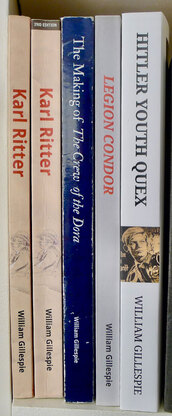 That is about US$27,000 or €24,300. As we sell many copies of the four books wholesale to re–sellers in the USA and Europe, we will never break–even on these books. The cost of researching the books, involving ten trips to Germany between 2010 and 2022; and three trips to Argentina between 2008 and 2018; where months of time were spent working in archives and meeting film scholars and friends or family of Karl Ritter; cannot be calculated. It is certainly many tens of thousands of dollars well spent. We had a fantastic adventure discovering the extraordinary life of, and unearthing new facts on, this amazing director! Karl Ritter was one of the world's first licenced pilots (1911, licence certificate #121) -- a talented graphic artist, a soldier in both WWI and WWII, awarded the Iron Cross 2nd and 1st class; awarded the Silver Medal from Franco for his Spanish Civil War film work; a NSDAP member since 1925, was married into the Richard Wagner family, who worked on 120 film scripts and/or silent and sound films between 1925-1944; worked with Alfred Hitchcock at Eltree Studios in London, with René Clare three times in Paris, was the Publicist for Walt Disney Produktion in the early 1930's, a pioneer in special effects for his aviation films Stukas and Besatzung Dora; took a crew of 43 men into the Soviet Union for an entire month during the Battle of Leningrad and filmed part of Besatzung Dora there behind Partisan lines; and as a Luftwaffe Major at age 56 –– escaped from Soviet captivity at the end of WWII; involving a harrowing and extremely dangerous 600 kilometer twenty-four day and night journey across Czech Partisan and Red Army lines on foot. His escape is told for the first time ever in his own words in our Ritter biography. Take our word for it......there is absolutely NO other film director of this era as interesting as is Karl Ritter!
That is about US$27,000 or €24,300. As we sell many copies of the four books wholesale to re–sellers in the USA and Europe, we will never break–even on these books. The cost of researching the books, involving ten trips to Germany between 2010 and 2022; and three trips to Argentina between 2008 and 2018; where months of time were spent working in archives and meeting film scholars and friends or family of Karl Ritter; cannot be calculated. It is certainly many tens of thousands of dollars well spent. We had a fantastic adventure discovering the extraordinary life of, and unearthing new facts on, this amazing director! Karl Ritter was one of the world's first licenced pilots (1911, licence certificate #121) -- a talented graphic artist, a soldier in both WWI and WWII, awarded the Iron Cross 2nd and 1st class; awarded the Silver Medal from Franco for his Spanish Civil War film work; a NSDAP member since 1925, was married into the Richard Wagner family, who worked on 120 film scripts and/or silent and sound films between 1925-1944; worked with Alfred Hitchcock at Eltree Studios in London, with René Clare three times in Paris, was the Publicist for Walt Disney Produktion in the early 1930's, a pioneer in special effects for his aviation films Stukas and Besatzung Dora; took a crew of 43 men into the Soviet Union for an entire month during the Battle of Leningrad and filmed part of Besatzung Dora there behind Partisan lines; and as a Luftwaffe Major at age 56 –– escaped from Soviet captivity at the end of WWII; involving a harrowing and extremely dangerous 600 kilometer twenty-four day and night journey across Czech Partisan and Red Army lines on foot. His escape is told for the first time ever in his own words in our Ritter biography. Take our word for it......there is absolutely NO other film director of this era as interesting as is Karl Ritter!
Please discover Karl Ritter for yourself by purchasing these titles. You shall not be disappointed!
